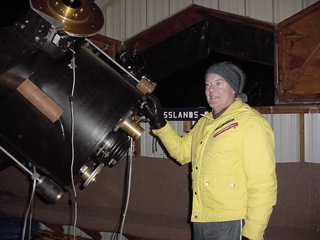In a 1996 article titled “Hunting Asteroids,” you said a dedicated amateur could discover an asteroid on almost any night using a CCD-equipped 8-inch telescope. Is that still true today?

Tim Hunter
It was easier for backyard observers to discover asteroids a few years ago. Today, massive professional surveys such as LINEAR, NEAT,and LONEOS are sweeping the sky every clear night, all night. When I began hunting, the only survey was Spacewatch on Kitt Peak in Arizona, which covered just a small portion of the sky. When I wrote that article forthe Spring 1996 issue of the now-defunct CCD Astronomy, I figured the sky had been pretty much picked clean of new asteroids down to magnitude 16. Most of my discoveries were brighter than 18th magnitude. Today I would say most objects brighter than magnitude 18 have been found.
To be a real player in the discovery field now, you need to reach magnitude 19 or beyond. Fortunately, that’s still possible for backyard observers with CCD cameras, but now I’d recommend using an 11-or 12-inch telescope.
— Dennis di Cicco
 2
2








Comments
Gg
August 14, 2023 at 11:21 pm
It would interesting to get an update for this reply for 2023. Is the minimum scope a 14 inch now, or bigger?
You must be logged in to post a comment.
Sean Walker
August 16, 2023 at 10:59 am
I don't think it necessarily requires a bigger scope these days, it's more about modifying how one searches- what is turning out to be fertile ground for amateurs is looking for Near Earth Objects (NEOs). Alain Maury (who runs the Atacama facility spaceobs.com) was #5 in the top 5 asteroid discovers in 2022. The other four were robotic surveys.
Also consider that CMOS detectors are much more sensitive than CCDs were back in 2006 when this article was written.
Here's a recent article on the matter: https://is.gd/asteroidsearching
You must be logged in to post a comment.
You must be logged in to post a comment.